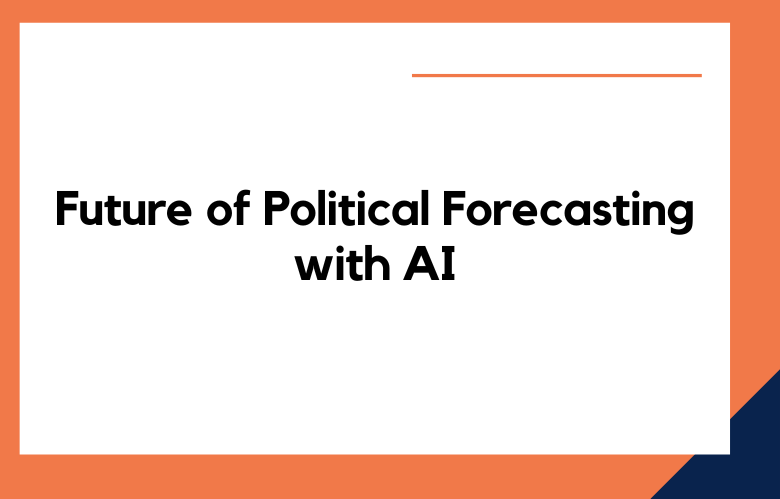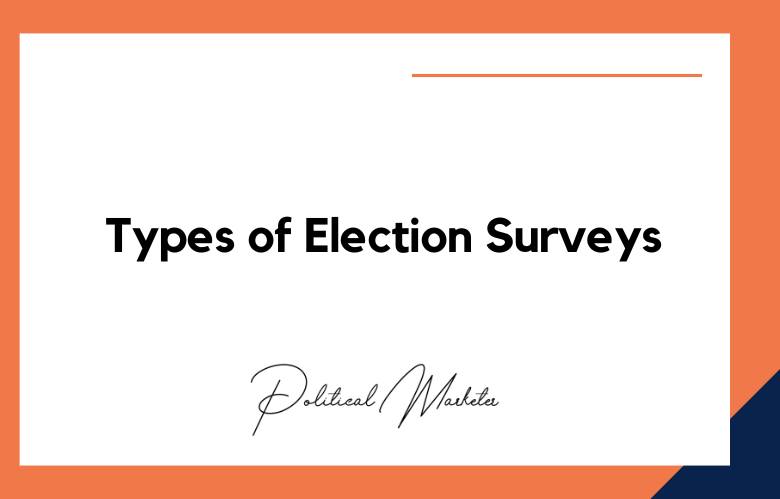Political forecasting is vital in predicting election results, providing insights into voting patterns and citizens’ behavior toward political campaigns. Political analysts have traditionally relied on polls, social media trends, and statistical modeling to forecast political outcomes.
However, with the advent of advanced machine learning models and increasing interest in artificial intelligence, AI has the potential to revolutionize political forecasting. We explore the possible applications of AI in political forecasting and the transformations it could bring to how we approach politics and elections.
The Future of Political Forecasting with AI
Analyzing Large Datasets:
AI can help process vast amounts of data in a fraction of the time it would take analysts to do so by hand. Harnessing this capability, political campaigns could analyze past voting records, demographic information, and other valuable data to predict the voting tendencies of specific demographics.
With AI, campaigns can target precise groups and hone in on the issues that matter most to these groups. This capacity can radically transform campaign strategies and enable politicians to tap into underserved demographics.
Automating Decision-Making:
Using AI models, political campaigns can automate the process of decision-making, assessing which messages resonate with voters based on their historical responses to political persuasion.
By training AI models on past elections, campaigns can leverage these models to make informed decisions on where to invest their resources. This pushes campaigns away from trial-and-error strategies by providing a more reliable indication of the issues and messages that will be more effective in generating voter support.
Social Media Analytics:
Social media platforms offer a unique window into voters’ views, opinions, and preferences. Through advanced analytics, AI can help campaign professionals understand the prevailing sentiments of the audience, enabling the identification of trending issues and topics that voters care about.
Advanced AI models can combine structured data, such as demographic information, with unstructured data, including sentiment analysis of social media posts, to create a more comprehensive and predictive picture of the audience than ever before.
Predicting a Voter’s Behavior:
AI can enable campaigns to anticipate how a voter will behave, including the likelihood of voting, turnout propensity, and support for specific candidates. AI can better predict voters’ voting behavior by analyzing extensive data sets, including voting behavior, cross-linked voter information, and demographic data. This approach can ultimately give political campaigns the ability to better segment and target voters – a key element to achieve a successful political campaign.
Increase Voter Engagement:
AI technology could increase voter turnout by analyzing diverse public data sources to recognize common denominators between voters, such as location or demographics. These demographic identifiers can help to arrange personalized voter messages that resonate based on the voter’s location, interests, and previous voting behavior. AI could be used to optimize when to send out these messages and create the content that will best reach voters.
Unleashing the Power of AI: Revolutionizing Political Forecasting
In recent years, Artificial Intelligence (AI) has become a powerful tool in various industries, including political forecasting. Political forecasting involves using data and multiple indicators to predict election outcomes, shifts in public opinion, and other political trends. With the increased data availability, AI algorithms have proved to be highly effective in accurately predicting political outcomes. This has created a revolution in the field of political forecasting.
One of the main advantages of AI in political forecasting is its ability to process enormous amounts of data quickly. Many traditional forecasting methods used in politics involve analyzing individual polls and making predictions based on those polls.
However, using AI algorithms allows for the analysis of a much more comprehensive range of data. This can include news articles, social media posts, and other publicly available information. The algorithms can then use this information to identify trends and accurately predict electoral outcomes.
Crystal Ball 2.0: How AI is Changing Political Predictions
In the fast-paced world of politics, predicting elections and outcomes has always been challenging. However, with the advancements in artificial intelligence (AI), the process of making political predictions has been transformed like never before. The new age of political forecasting – the Crystal Ball 2.0 – has arrived, changing how we view political predictions.
One of the primary reasons for the success of AI in political forecasting is the vast amount of data that is now available. From opinion polls and social media trends to historical voting patterns and analytics, a wealth of data can be analyzed and interpreted to make accurate predictions. Machine learning algorithms can crunch this data, identify trends and patterns, and provide predictive models that can be used to forecast election results.
Predicting the Unpredictable: AI’s Role in Political Forecasting
Politics has always been a highly unpredictable and volatile realm, making forecasting future events a complex and challenging task. However, with the advent of Artificial Intelligence (AI), political forecasting has witnessed a significant transformation. AI has been recognized as one of the most powerful tools for accurately predicting political events. The ability of AI to process, analyze, and interpret complex data sets has made it a valuable resource for policy-makers, decision-makers, and analysts.
Political forecasting is a critical aspect of the political process. It shapes policy decisions, electoral outcomes, and global events. Accurate predictions can help prevent conflicts, guide diplomatic relations, and ensure the long-term stability of nations. The use of AI in political forecasting has gained immense popularity in recent years, with analysts relying on algorithms and machine learning models to make predictions.
The AI Advantage: How Machine Learning is Reshaping Political Forecasts
In today’s digitally-driven world, machine learning has undoubtedly become a significant player in almost every sector, and the realm of political forecasting is no exception. With data analysis and artificial intelligence, political analysts can make much more accurate and informed predictions about election outcomes and other political events.
The use of machine learning in political forecasting has been steadily growing over the past decade, with more and more analysts turning to algorithms and predictive models to help them identify and interpret critical factors that could influence political outcomes. By harnessing the power of large, complex data sets and leveraging powerful algorithms, machines can identify patterns and correlations that might otherwise go unnoticed by human analysts.
From Guesswork to Science: AI’s Impact on Political Projections
The field of political projections has undergone a significant transformation with the advent of artificial intelligence (AI) technology. In the past, political projections were often made based on guesswork and intuition, resulting in high uncertainty in their accuracy. However, with the development of AI, political projections have become much more scientifically grounded and reliable.
One of the significant advantages of AI technologies in political projections is their ability to analyze vast quantities of data and identify patterns and trends that would be difficult or impossible for human analysts to detect. This is particularly important in predicting the outcomes of elections, where small shifts in voter behavior can significantly impact the final result.
AI-Powered Politics: The Future of Forecasting
Artificial intelligence (AI) has made its mark in numerous industries, including finance, healthcare, and entertainment. However, its potential for disrupting the political arena is still relatively unexplored. As the world becomes increasingly complex, politicians and analysts struggle to keep up with the rapid pace of change and accurately forecast the outcomes of elections, policy decisions, and global events.
AI-powered politics represents a paradigm shift in political forecasting. This emerging trend leverages machine learning algorithms to analyze vast amounts of data, spot patterns and trends, and predict future outcomes with remarkable accuracy. By processing data from social media, news sources, and other online platforms, AI can provide insights into public opinion and sentiment, which are crucial for political decision-making.
Conclusion:
As we move forward, AI technology is set to revolutionize political campaigns as we know them today. By leveraging the power of machine learning models, candidates can now analyze vast amounts of data and customize campaign messaging and tactics to create a far more targeted and data-driven approach.
This approach yields valuable insights into voter behavior, offering campaigns the potential to achieve political success beyond the reach of typical statistical methods. Therefore, AI has become a powerful tool for political forecasting and a necessary component of political campaigns. We can only expect to see more advanced applications of AI in political forecasting as future presidential campaigns and other electoral offices use AI to impact voting behaviors positively.
Call: +91 9848321284
Email: [email protected]










